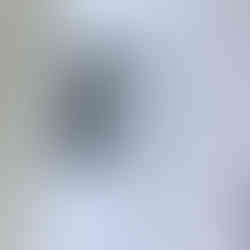Art Lesson 2 - Tone
- Summer Rawlings
- Oct 8, 2018
- 3 min read
Updated: Feb 4, 2019
For our second lesson we started by looking at how light effects art; the highlights, shadows and everything in between. The first step being to spot the lightest and darkest areas of an object; the lightest will have little to no shading and there darkest having the most and hardest shading.


The area in between these areas holds every tone from the lightest to the darkest shade on that object; to help us understand and get use to the range of tones we looked at tonal gradation.
To do this we started off with the lightest tone we could make on our paper, pressing down ever so slightly, then slowly building up tones along the paper, pressing down slightly more at every stroke. Once getting to the darker tones, pressing as hard as we could, getting the darkest and most pigment from the pencil.
We then went on to learn about the rule of thirds; placing the main part of the object within one of the four points where the lines intersect. This makes the image more interesting as you natural want to place the object in the middle of the page.

I went on to use both of these, the rule of thirds and tonal gradation, in my class drawing. I chose to draw an orange and two plums ,from the arrangement of fruit, which I placed in the two left points. I started by sketching out the three pieces of fruit using the sighting method I learned the previous lesson in order to get the correct proportions. After this I located the lightest and darkest areas of the fruit as this would make it easier when adding tone; between these areas I then had to "fill it in" using tonal gradation to create a more realistic tones. The last thing I did was creating the texture inside the orange which I did by making circular markings as a base texture then going over with rough, light segments to create a more realistic texture. I think this drawing turned out well as it improved my shading and pointing out tones, however I didn't have enough time to finish the drawing in the lesson but will try and finish it in my spear time.

We then went on to talk about another shading technique; crosshatching. Crosshatching s made up of layered lines in areas that are built up to create tone; the more layers you put onto, the darker the tone. In my opinion this technique is good for creating rough texture whilst shading and even coloured tones.

In my next drawing I used crosshatching for my still life of a mango as I thought it would be a good way to show the range of colours within the mango because due to the light, there wasn't much tone. Once again I started with a basic sketch as I was only drawing the one object and cleaned up the edges before I started shading. I first picked out the darker areas of the mango and use crosshatching to add the tone; something I then built up in the darkest area by layering and putting pressure on my pencil marks. As there wasn't much tone I used crosshatching to bring out the red patch in the mango as I thought it made the drawing more interesting and made its range of colours more understandable in a tonal drawing. After this I decided to add in another plum as I wanted to test this technique out on a more rounded and tonal object. Once again I located the darker areas and layered marking to make the darkest tones.











Comments